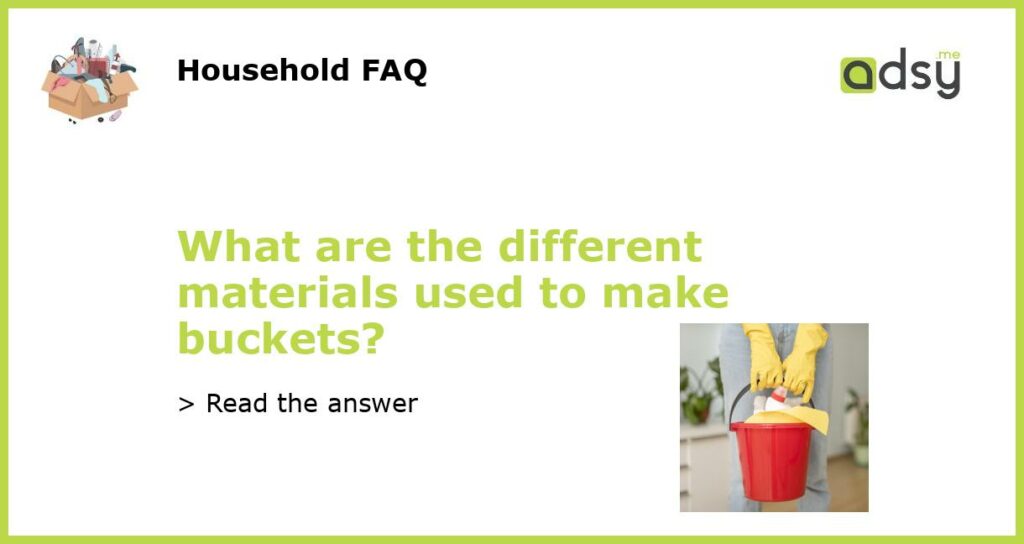Metal Buckets
Metal buckets are a popular choice for many applications. They are typically made from materials such as aluminum, stainless steel, or galvanized steel. These materials offer durability and strength, making them ideal for heavy-duty tasks. Metal buckets also have the advantage of being resistant to rust and corrosion, which is important if the bucket will be exposed to water or other corrosive substances.
Plastic Buckets
Plastic buckets are lightweight and practical, making them a versatile option for various uses. They are commonly made from high-density polyethylene (HDPE), a thermoplastic known for its strength and resistance to chemicals. HDPE buckets can withstand a wide range of temperatures and are commonly used in industries such as food processing, agriculture, and construction.
Wooden Buckets
Wooden buckets are a traditional and aesthetically pleasing option. They are typically made from solid wood, such as pine or oak. Wooden buckets are often used for decorative purposes, such as flower pots or storage containers. However, they are not as practical for heavy-duty tasks as metal or plastic buckets, as wood is more susceptible to rot and damage from moisture.
Rubber Buckets
Rubber buckets are commonly used in industries that require flexibility, such as agriculture or construction. They are typically made from natural or synthetic rubber, which offers elasticity and resistance to tearing. Rubber buckets are also known for their durability and can withstand harsh conditions, such as extreme temperatures or exposure to chemicals.
Fabric Buckets
Fabric buckets are a unique option that offers flexibility and portability. They are typically made from durable fabrics such as canvas or nylon. Fabric buckets are often collapsible and lightweight, making them easy to transport and store. They are commonly used for camping, gardening, or as storage containers. While fabric buckets may not be as durable as metal or plastic options, they offer advantages in terms of convenience and versatility.






